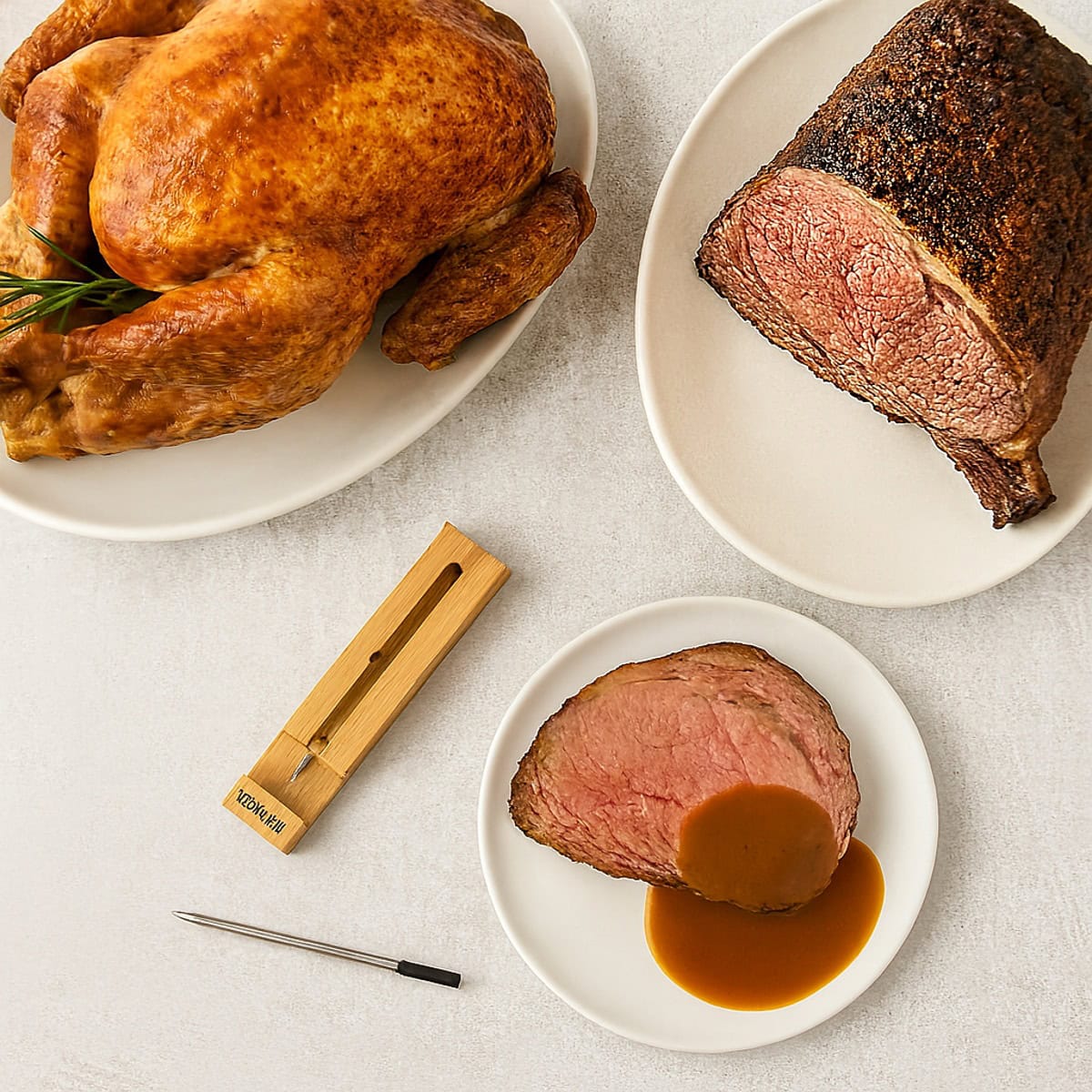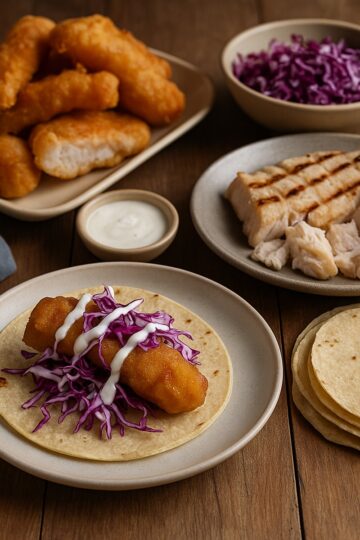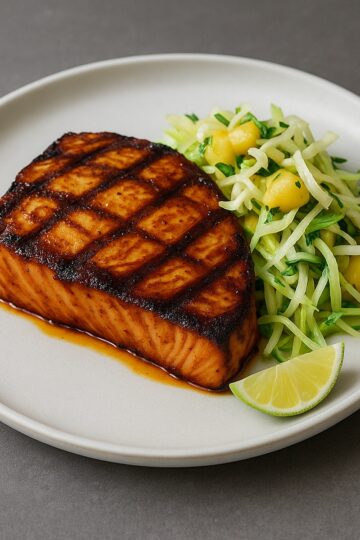
Nothing ruins a great cut of meat faster than guessing if it’s done. A thermometer is your backstage pass to confidence — the difference between 'pretty close' and 'perfection.' Whether it’s a prime filet, sous-vide duck breast, or a slow-roasted leg of lamb, temperature is the only honest measure of doneness. If you’ve been poking, pressing, or cutting into meat to check — that ends today.
Why a Meat Thermometer Is Non-Negotiable
A digital thermometer isn’t just for professionals. It’s your insurance policy against overcooked steaks and undercooked poultry. Temperature equals texture — too low is unsafe and chewy, too high is dry, and just right is tender, juicy, and perfect.
Types of Meat Thermometers
- Instant-Read Thermometer -Fast and accurate (reads in 2–3 seconds). Ideal for steaks, chops, and quick checks.
- Leave-In Probe Thermometer -Perfect for roasts or smoker meats. Set your target temp and monitor without opening the oven or grill.
- Smart Bluetooth Thermometer -Connects to your phone and tracks temperature remotely — great for multitasking chefs or creators filming while cooking.
Temperature Guide for Meat Doneness
| Protein | Doneness | Target Temp (°F) | Notes |
| Beef (Steak/Roast) | Rare | 120–125 | Deep red center, cool to warm |
| Medium-Rare | 130–135 | Bright pink, juicy and tender | |
| Medium | 140–145 | Pink core, firm texture | |
| Medium-Well | 150–155 | Slight blush, firmer | |
| Well Done | 160+ | Fully brown throughout | |
| Pork | Medium-Rare | 135 | Slight blush, ultra-juicy |
| Medium | 140–145 | USDA safe, tender and pink | |
| Chicken/Turkey | Fully Cooked | 160–165 | Always cook to 165°F internal |
| Duck Breast | Medium-Rare | 130–135 | Rosy center, rendered fat |
| Lamb | Medium-Rare | 130–135 | Tender, pink center |
| Medium | 140–145 | Slightly more firm | |
| Fish | Tender-Flake | 120–130 | Juicy, opaque, not dry |
Resting rule: Meat rises about 5°F after removing from heat — always rest before slicing.
How to Calibrate and Care for Your Thermometer
- Check calibration monthly using ice water (32°F) or boiling water (212°F).
- Clean the probe after every use with hot, soapy water.
- Avoid leaving instant-read models in the oven — they’re fast, not heatproof.
- Store in a sheath or drawer away from blunt utensils to protect the probe tip.
Chef’s Notes
- For thin cuts like fish or duck breast, insert the probe at a side angle to hit the center precisely.
- For reverse-seared meats, pull 10°F early and finish over high heat to develop crust without overcooking.
- Use two thermometers when batch cooking: one for grill-side checks, one for holding temps.
Cook With Precision
You’ve spent time sourcing beautiful meat — don’t leave the results to luck. Equip your kitchen with a reliable thermometer and master internal temperatures. Once you start cooking by the numbers, you’ll never cut into a steak to check again.



Comments
No Comments